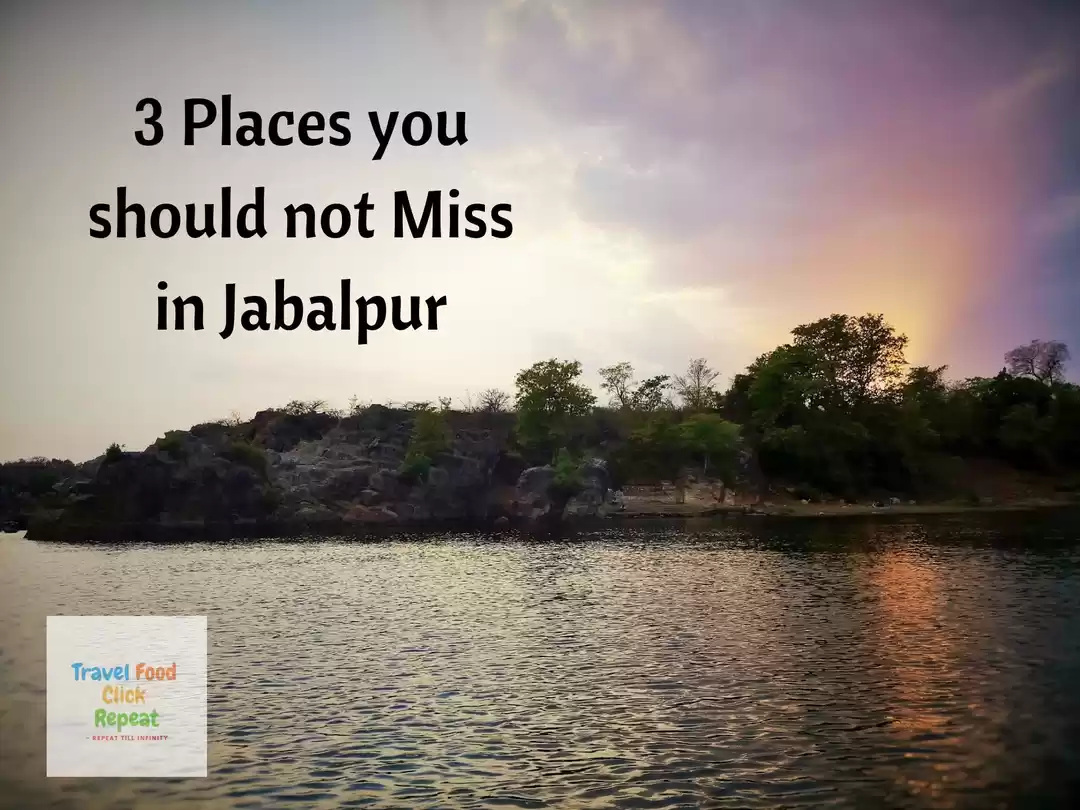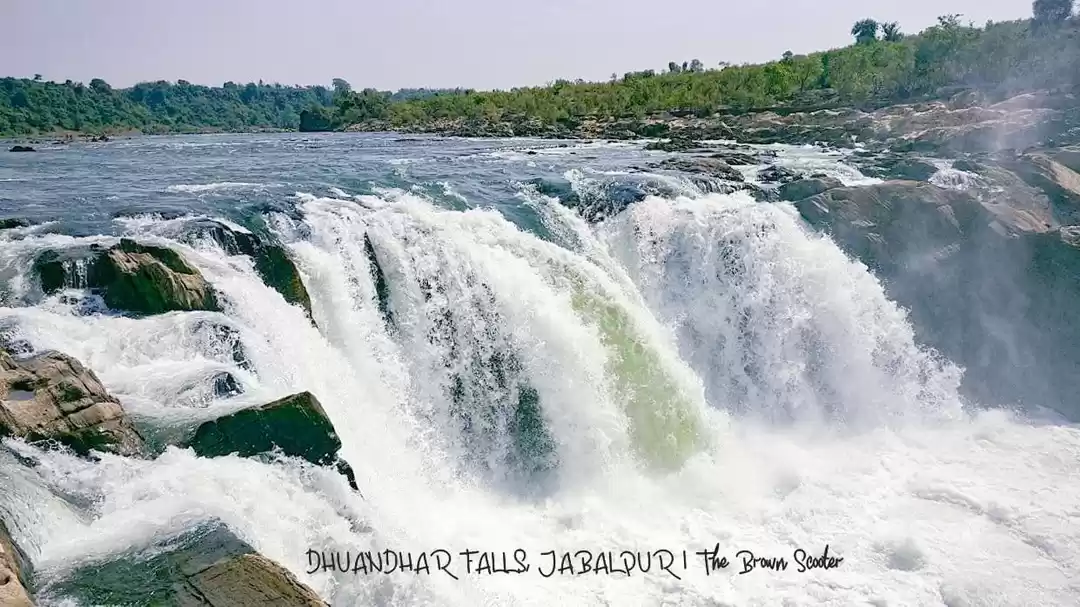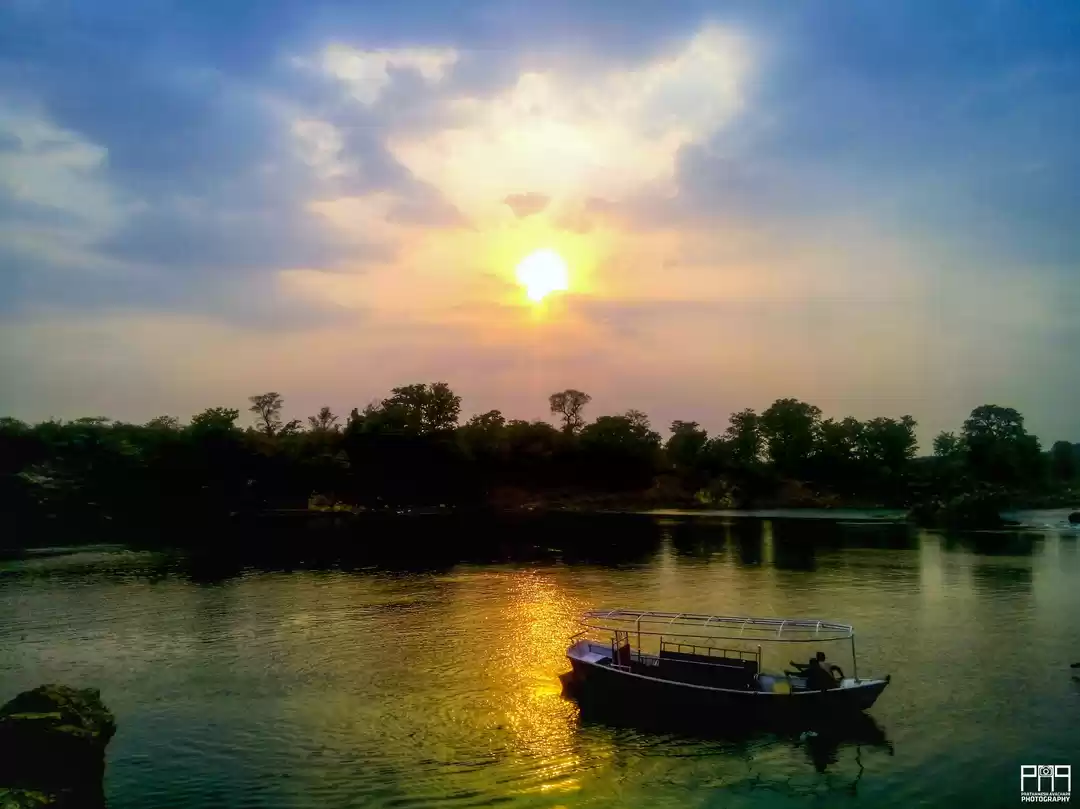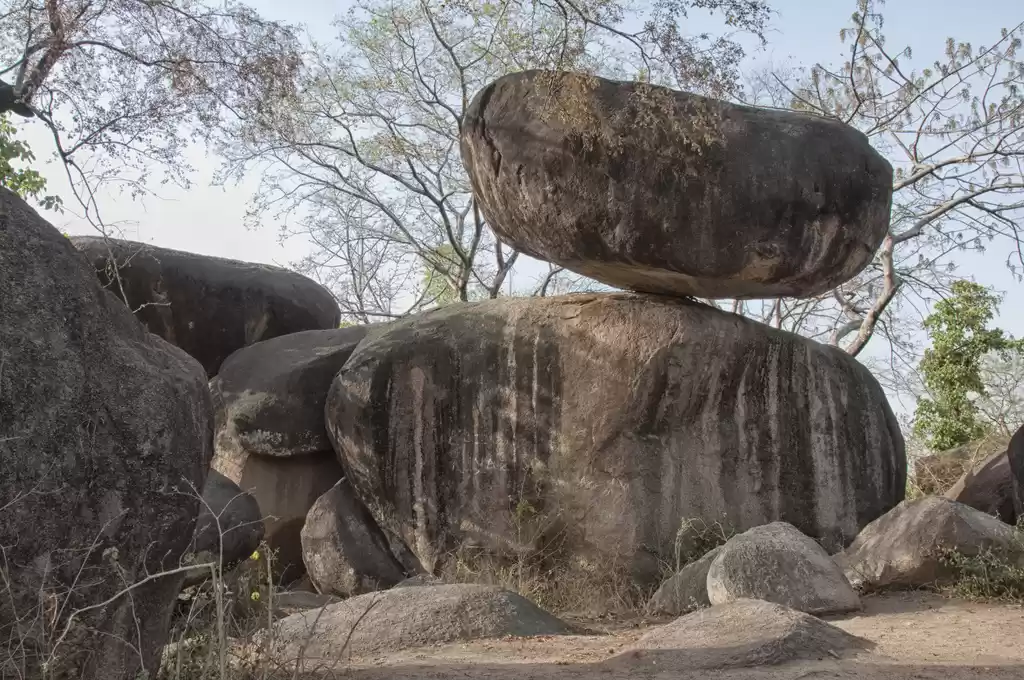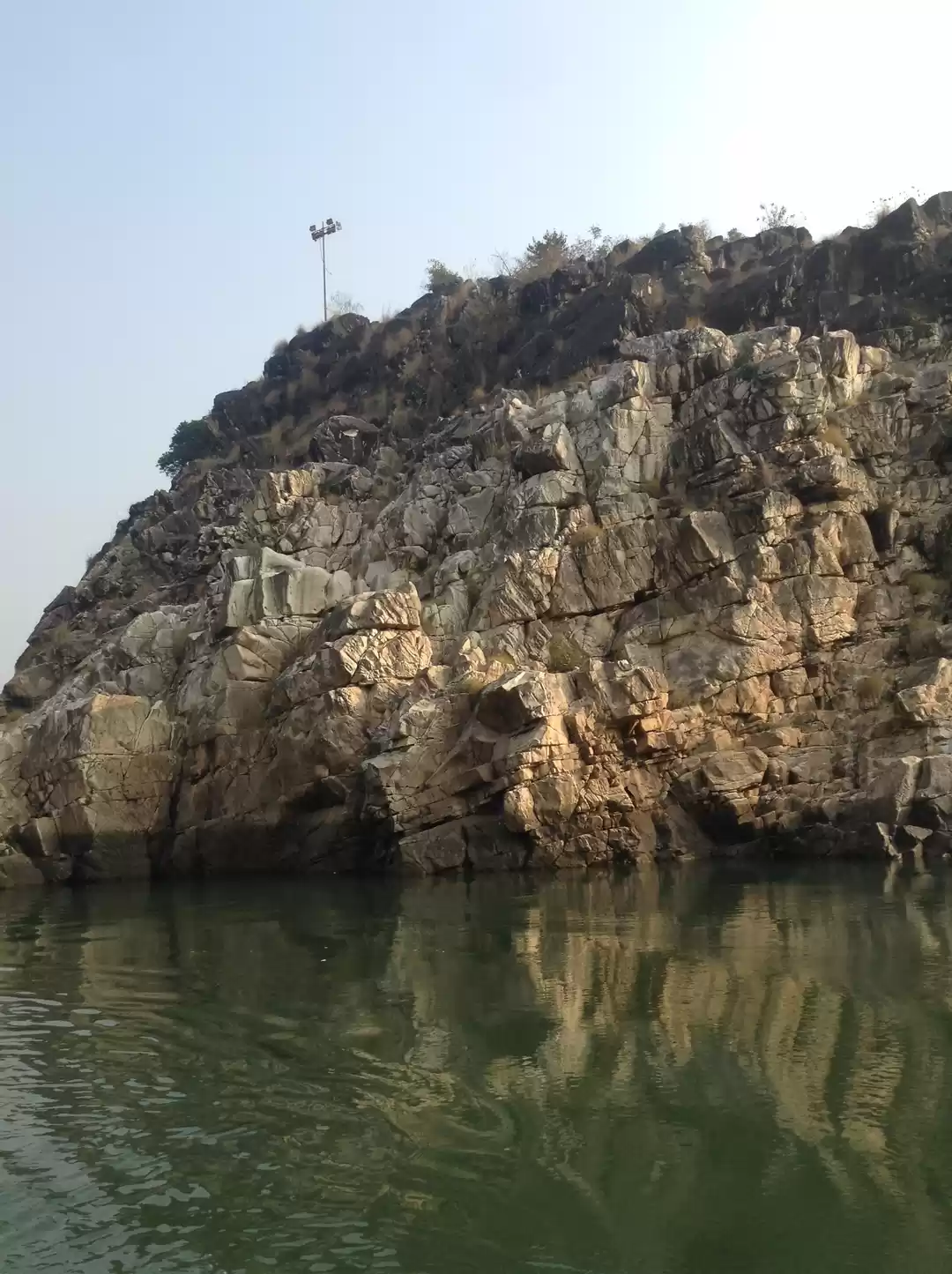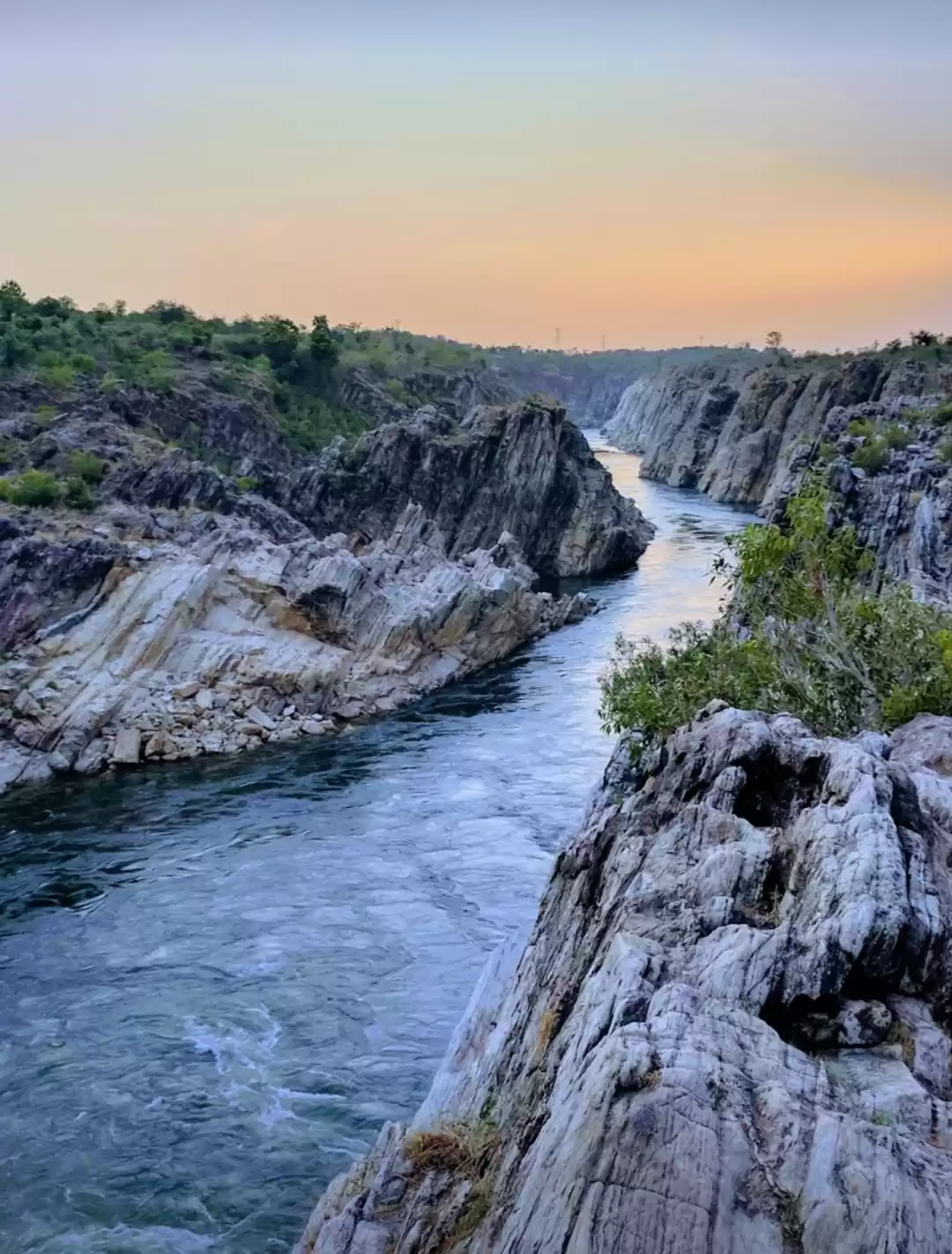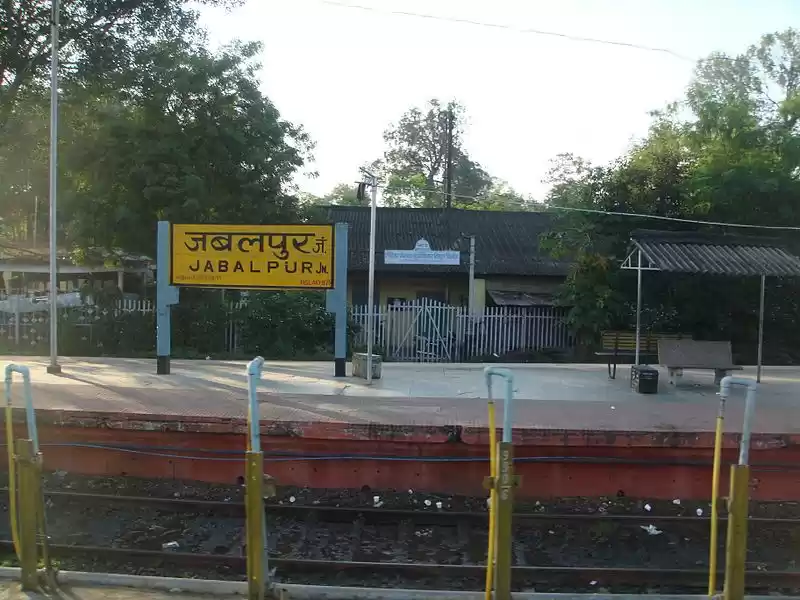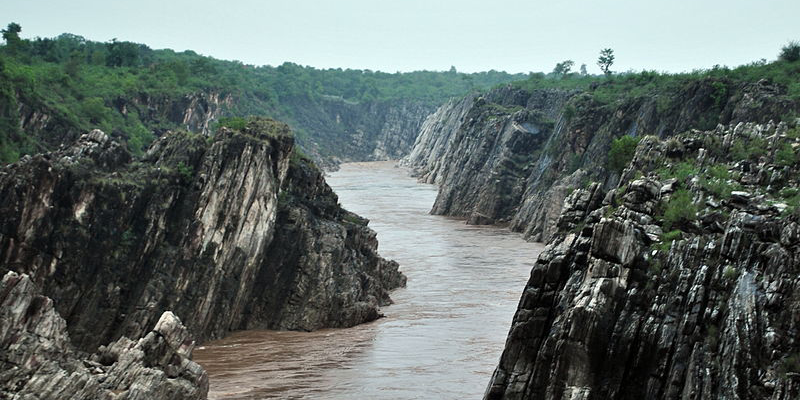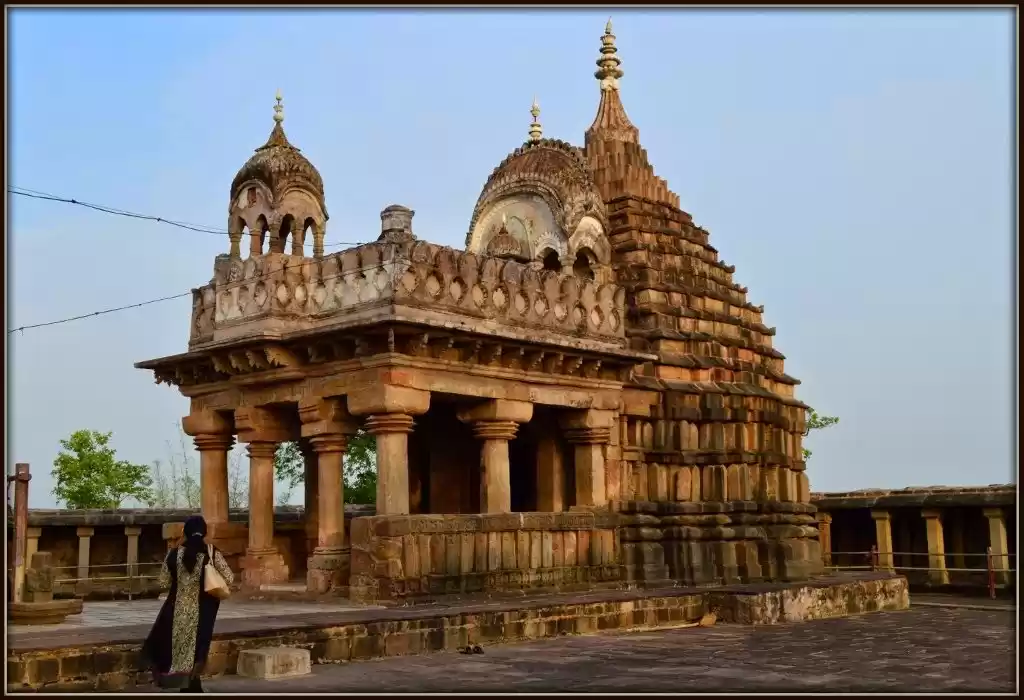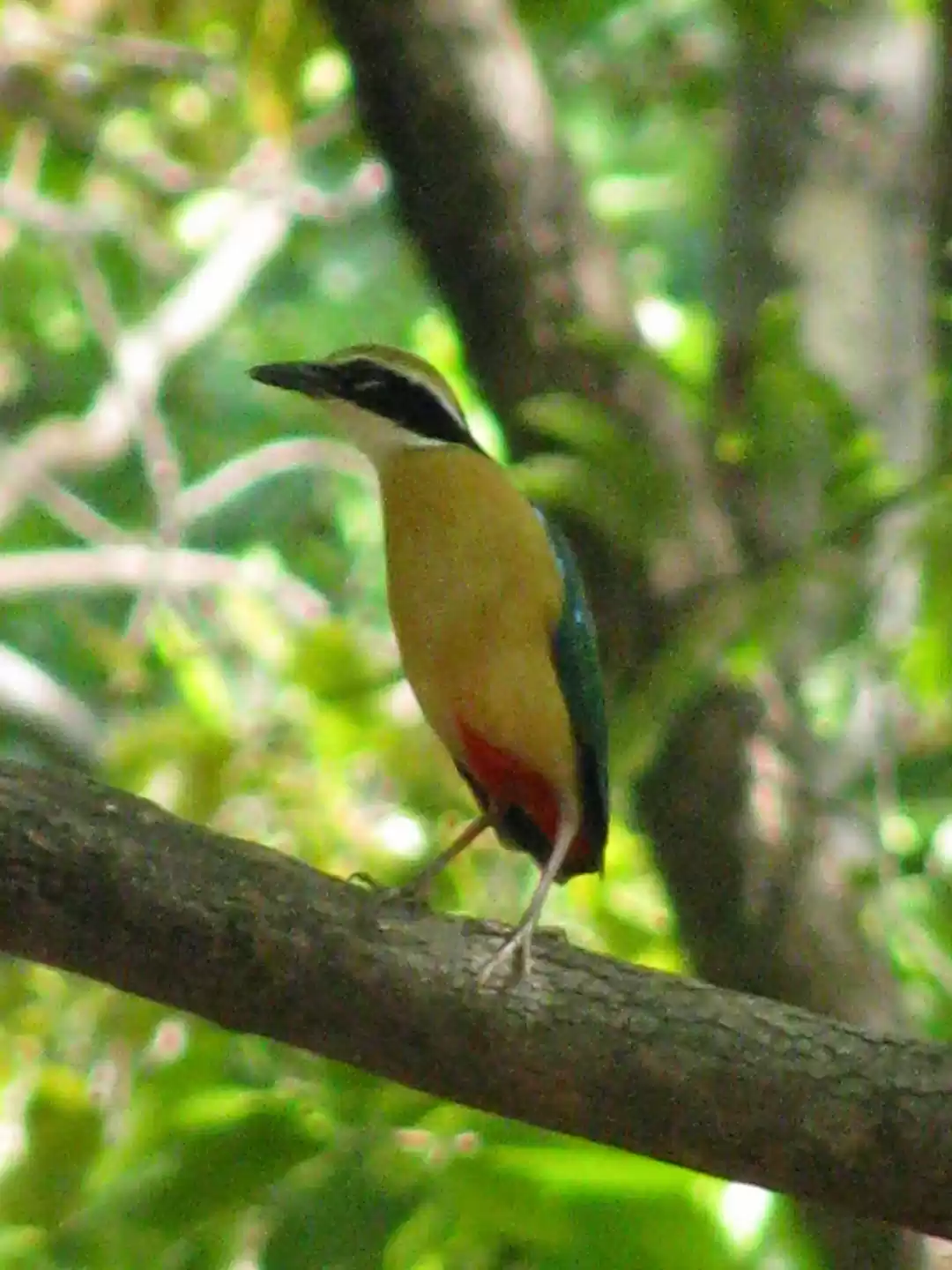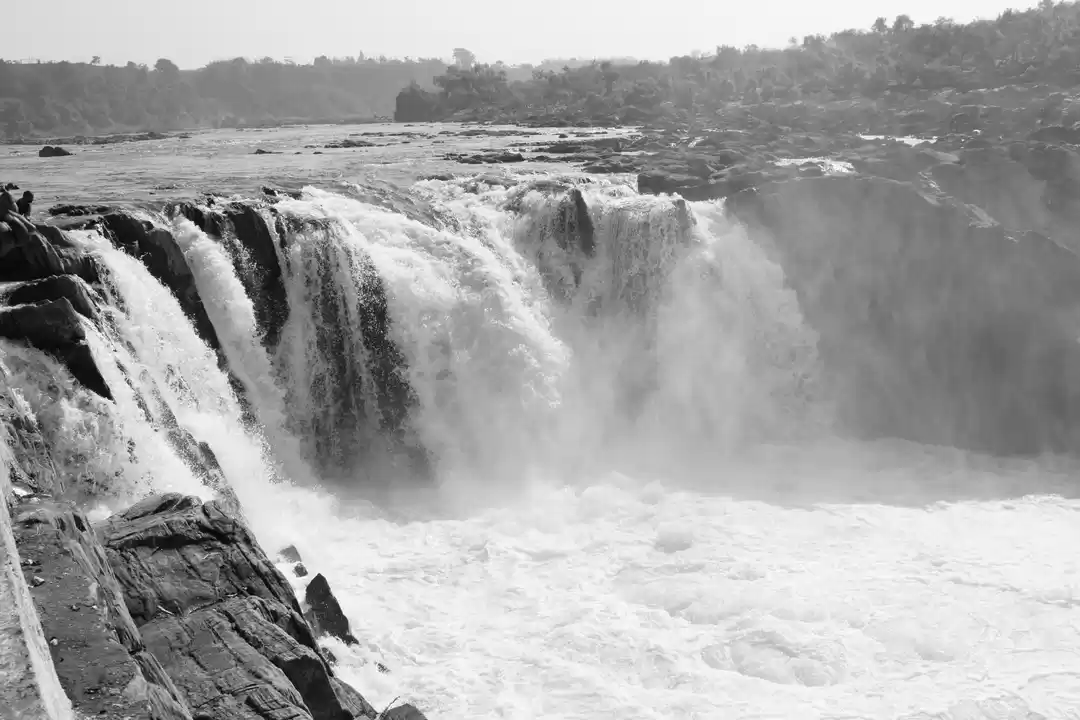Imagine a quaint canoe snaking through a serene river with rocks of varying colours unravelling before you. Pure bliss ! All that and much more I was witness to in my latest trip to Jabalpur - the marble city.
Located in central India in the state of Madhya Pradesh, Jabalpur is the 3rd largest city in this state by population. It is interesting to note that at 367 km2, it is bigger compared to the capital city Bhopal (286 km2). After a weary train ride which was inordinately delayed, I reached my hotel, exhausted.

The main attraction in this city is the marble rocks. Located at Bhedaghat 25 km south west of the city, the Narmada river here takes a sharp bend and descends through the Dhuandhar waterfalls (dhuan - mist, dhar - flow), a drop of 10m. Then it flows through a 3 km rocky gorge and through towering cliffs, known as the Marble Rocks.
Dhuandhar waterfalls
There is a cable car service (two way ride for Rs 85) that provides a bird's eye view of the waterfall.
The Narmada river is one of the rare west flowing rivers in India. Originating from Amarkantak at a height of 1048m, it carves out jagged marble rocks and cliffs of varying proportions at Bhedaghat. Different shades of brown, white and green coloured rocks rising up perpendicularly from the river upto a height of 100 feet is a spectacular sight. These rocks are rich in magnesium and are closer in hardness to soapstone. At a certain point, the river is so narrow that monkeys could easily jump across, hence giving it the name bandar kudni (bandar - monkey, kudni - jump).

The boat ride downstream of the river through the Marble Rocks is an experience not to be missed. Two rowers and a steerer operate the boat. The rowers also double up as a guide, entertaining the tourists by describing the various Bollywood movie scenes that have been shot here. There is also a boat service at night. This service however, does not operate during the monsoon season.
With a little bit of imagination, a few rock patterns resemble the three monkeys of Gandhiji, or the triple headed gods Brahma, Vishnu and Shiva.

Marble rocks- The sheer intricacy of these cliffs and rock formations is breathtaking.
For as little as Rs 100 you get an hours ride through this natural wonder. There are also souvenir shops selling beads, necklaces, idols of gods and goddesses, paper weights and other artifacts. Definitely worth a buy! And memories to last a lifetime !
My second day in the city started off with a visit to the Narmada River ghat. Life over here is slow paced, with bikes on motorboats crossing the placid river and a few exquisitely decorated boats.
Balancing Rock
The highlight of the day was the visit to the Balancing Rock. A geological wonder, it is a large boulder which rests precariously on another flatter rock with a tiny base. This rock remained undisturbed when an earthquake of magnitude 5.8 struck the city. There are a few such balancing rocks located in the United States, Canada, and Africa.

The last place on my itinerary was the Madan Mahal Fort. Located a stone's throw away from the balancing rock, it is also known as Rani Durgavati Fort. Built by the Gond rulers in the 11th century, it is mostly in ruins. Nevertheless, in its heyday it was used as a military outpost. Its strategic location atop a hill provides a commanding view of the city and its surroundings. A reservoir and stables adjoin the main fort structure.


Getting there :
Jabalpur is well connected by road and rail networks. Two national highways NH34 and NH40 criss cross the city. Distances to major cities are :
Bhopal - 304 km (8 hours)
Nagpur - 288 km (6 hours)
Indore - 523 km (10 hours)
Allahabad - 361 km (8 hours)
Both private and government bus operators ply along these routes.
Jabalpur junction is the main railway station in the city. Trains are available to all major cities like Delhi (17 hours), Mumbai (18 hours), Kolkata (20 hours), Bhopal (6 hours) and Nagpur (9 hours).
Air connectivity is quite limited, with direct flights to only Delhi and Mumbai. There are no direct flights connecting Jabalpur with other nearby cities like Bhopal, Nagpur and Indore.

Getting Around :
The best option is to hire taxis which are available from Jabalpur Junction station. For visiting just Bhedaghat, bus number 6 can be taken from the railway station.
Best time to visit :
Oct to Feb - when the sun is at its pleasant best (250C). Nights can be a little chilly (100C), so its advisable to pack light woolens.
Languages :
Hindi is understood and spoken widely here. Unlike tier-I cities, English even though understood a bit, is not spoken much by the local populace. In most places, signboards are written in Hindi only.
Accommodation :
I would recommend Hotel BK Castles. Situated in the heart of the city, with neat and spacious rooms, good room service and complimentary breakfast.
Food :
Do not miss out to taste Khoya Jalebi, one of the most lip-smacking desserts and a local delicacy.
Excursions :
Catch a tiger in the wild in either the Bandhavgarh, Kanha or Pench National Park, all located 4-5 hours drive from the city. Or you could marvel at the amazing sculptures of the temple of Khajuraho, 250 km away.
This post was originally published on Globetrotting Me.
Frequent Searches Leading To This Page:-
dhuandhar waterfalls jabalpur madhya pradesh, bhedaghat waterfall jabalpur madhya pradesh, waterfalls around jabalpur, waterfalls in madhya pradesh india, tourist places in jabalpur madhya pradesh















